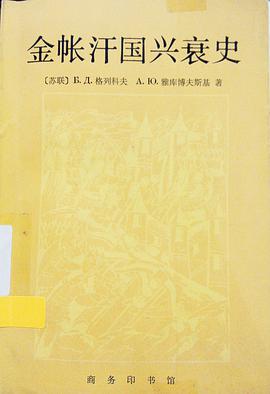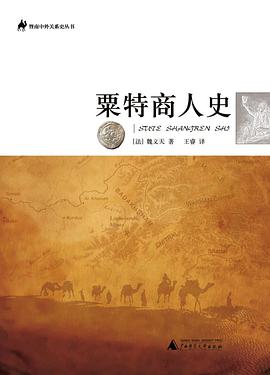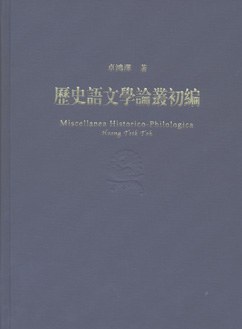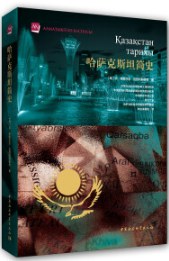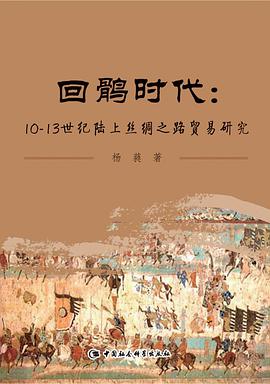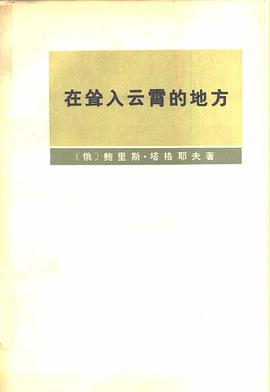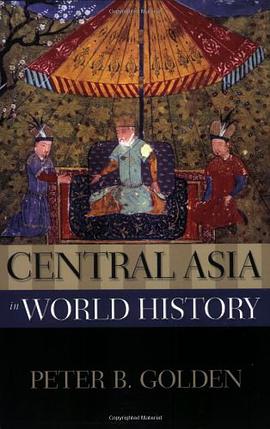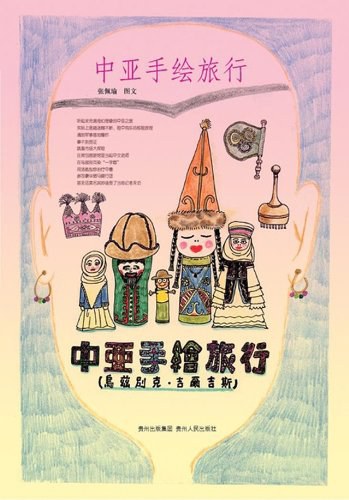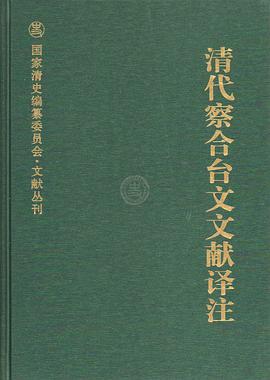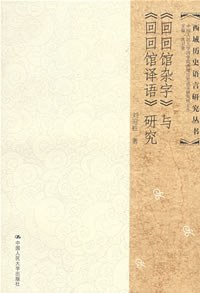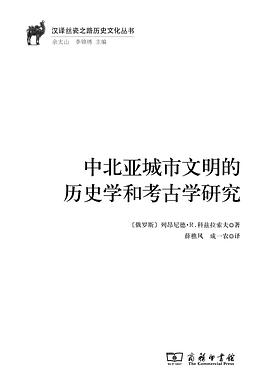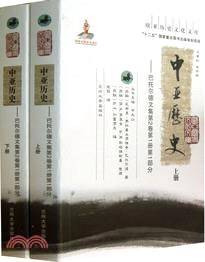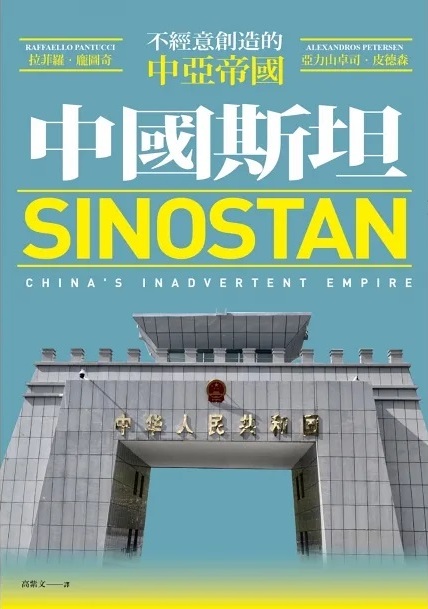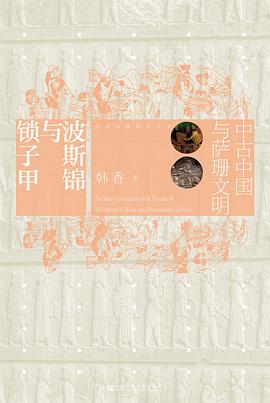“tag:中亚”
粟特商人史 [图书] 豆瓣
作者:
【法】魏义天
译者:
王睿
广西师范大学出版社
2012
- 11
《暨南中外关系史丛书:粟特商人史》通过研究公元前6世纪至公元10世纪散落在印度、伊朗、中国、拜占庭和北亚草原的粟特人遗物,从社会学角度出发,详细论述了中古粟特商业生长盛衰的历史演变过程。从公元前2世纪到公元10世纪,粟特商人从只具局部意义的小规模商业开始经营,在与巴克特里亚、印度商人的竞争中后来居上,脱颖而出。并在突厥人、卡扎尔人的政治护翼下,西通拜占庭、东人中国,在克里米亚到朝鲜的欧亚草原建立起广泛的商业网络。粟特人既是东西商贸的担当者,也是游牧民族和农耕民族之间的贸易中介。但萨珊波斯的衰亡、索格底亚那被阿拉伯征服以及唐朝爆发的安史之乱,给建立在政治基础上的粟特商业带来致命打击,随着丝绸之路的陆海转换,波斯商人控制了海上贸易主导权,粟特商业最终走向衰亡。有鉴于中国在粟特商业网的拓展中所起到的“催化”作用,故本书第五章专门论及中国粟特商人的情况,对塔里木甘肃地区、京师诸州,甚至四川、吐蕃的粟特人聚落、贸易网发展、萨宝功能和演变,以及姓氏、婚姻的华化问题均有论述。
吐谷浑史 [图书] 豆瓣
作者:
周伟洲
广西师范大学出版社
2006
- 6
作者在收集、整理吐谷浑史资料的基础上,吸收中外有关的研究成果,撰写了本书。由于我国史籍中有关吐谷浑的资料十分缺乏,而且现存资料大都是出自内地政权汉族封建史家的手笔,他们的记述主要集中在内地政权与吐谷浑的关系上,因而,要完整地论述吐谷浑族本身的历史几乎是不可能的,甚至对象吐谷浑的社会性质这类的重大问题,也难作出明确的回答。这种情况,也恰好说明我国西北古代民族吐谷浑与其它民族及其所建政权关系之密切,研究这种关系对于认识中华民族的形成及各族人民共同缔造祖国历史,是十分必要的。基于上述情况,本书用了较大的篇幅论述吐谷浑与邻近各民族及其所建政权的关系,并以此作为本书探讨的重要课题。
中央亚细亚地图是怎样产生的 [图书] 豆瓣
作者:
H.M.休金娜
译者:
姬增禄
/
阎菊玲
2012
- 7
《新疆通史翻译丛书:中央亚细亚地图是怎样产生的》的作者尽自己的力量说明中国以及其他考察家们对绘制中央亚细亚地图所作出的贡献的同时,把俄国地理学家们的考察工作成果告诉读者作为《新疆通史翻译丛书:中央亚细亚地图是怎样产生的》的主要目的,因为正是他们的努力,才绘制成了现代亚洲大陆内部地区地图。
在《新疆通史翻译丛书:中央亚细亚地图是怎样产生的》中,作者力求顾及到那些分散在考察家的报告和书信中,俄国和外国的各个旅行家的游记、路线图和情况图中以及全苏地理学会保存的部分档案文件中的所有对选题来说最有趣、最重要的资料。
在《新疆通史翻译丛书:中央亚细亚地图是怎样产生的》中,作者力求顾及到那些分散在考察家的报告和书信中,俄国和外国的各个旅行家的游记、路线图和情况图中以及全苏地理学会保存的部分档案文件中的所有对选题来说最有趣、最重要的资料。
回鹘时代 [图书] 豆瓣
作者:
杨蕤
中国社会科学出版社
2015
- 6
本书是一项基础性的研究,旨在阐明10-13世纪特定的民族、经济和地缘政治环境下陆上丝绸之路贸易史的演变过程。盛唐之后陆上丝绸之路的演变状况是中外历史上的重要事件,客观地再现这段历史可以弥补丝绸之路研究史上的薄弱环节,其在学术上的意义和价值是十分重要的。本书对前人的研究成果进行了较为系统的归纳与整理,将以宋朝、西夏、辽等政权与西方的交往分为几个研究板块,以贸易线路、贸易方式、贸易主体等内容为研究线索,在勾勒出10—13世纪陆上丝绸之路基本状况的同时,力图在整体上把握丝绸之路各要素之间的内在联系,使研究呈现出系统性和完整性。
波斯帝国史 [图书] 豆瓣
作者:
[伊朗]阿卜杜·侯赛因·扎林库伯
译者:
张鸿年
复旦大学出版社
2011
- 7
本书是一部伊朗人写的伊朗古代史,论述了伊朗民族的起源和波斯帝国的兴衰。伊朗人的古代世界的图景一部分隐藏在民族神话之中,另一部分有限的史料存在于希腊、罗马的传说中。仰赖作者妙手钩沉,我们得以一窥这片古老的土地上波澜壮阔的过往。
一般的波斯帝国史著作对伊朗三大王朝中的阿契美尼德王朝和萨珊王朝叙述详尽,而对延续了近五百年的帕提亚王朝往往语焉不详。本书作者扎林库伯教授利用希腊、罗马、阿拉伯、中国的史料,结合历年的考古发现,对帕提亚王朝进行了全面详尽的论述,其中有关经济、文化和宗教方面的论述尤为精辟深刻。
一般的波斯帝国史著作对伊朗三大王朝中的阿契美尼德王朝和萨珊王朝叙述详尽,而对延续了近五百年的帕提亚王朝往往语焉不详。本书作者扎林库伯教授利用希腊、罗马、阿拉伯、中国的史料,结合历年的考古发现,对帕提亚王朝进行了全面详尽的论述,其中有关经济、文化和宗教方面的论述尤为精辟深刻。
Central Asia in World History [图书] 豆瓣
作者:
Peter B. Golden
Oxford University Press
2011
- 2
A vast region stretching roughly from the Volga River to Manchuria and the northern Chinese borderlands, Central Asia has been called the "pivot of history," a land where nomadic invaders and Silk Road traders changed the destinies of states that ringed its borders, including pre-modern Europe, the Middle East, and China. In Central Asia in World History, Peter B. Golden provides an engaging account of this important region, ranging from prehistory to the present, focusing largely on the unique melting pot of cultures that this region has produced over millennia. Golden describes the traders who braved the heat and cold along caravan routes to link East Asia and Europe; the Mongol Empire of Chinggis Khan and his successors, the largest contiguous land empire in history; the invention of gunpowder, which allowed the great sedentary empires to overcome the horse-based nomads; the power struggles of Russia and China, and later Russia and Britain, for control of the area. Finally, he discusses the region today, a key area that neighbors such geopolitical hot spots as Iran, Afghanistan, Pakistan, and China.
Buddhism and Islam on the Silk Road [图书] 豆瓣
作者:
Johan Elverskog
University of Pennsylvania Press
2010
- 3
Elverskog has produced, for the very first time, a detailed account of the long-term interaction of Buddhism and Islam that should be welcomed by all students of Eurasian history. His approach to this issue is informed, balanced, and insightful. He understands that it is important to recognize the diversity within both religions, and that their encounters were not clashes between monolithic belief systems. Their relationship ran the gamut between religious violence and fanaticism to cultural exchange and tolerance.—Thomas T. Allsen, author of The Royal Hunt in Eurasian History
This is the most thorough treatment I have seen of the historical relationship between Buddhism and Islam. Elverskog skillfully and often entertainingly corrects many longstanding stereotypes about both religions, and richly demonstrates the complexity of their historical interaction with each other. This book is thoughtful, its arguments well supported, and its style very accessible. —Richard Foltz, author of Religions of the Silk Road
In the contemporary world the meeting of Buddhism and Islam is most often imagined as one of violent confrontation. Indeed, the Taliban's destruction of the Bamiyan Buddhas in 2001 seemed not only to reenact the infamous Muslim destruction of Nalanda monastery in the thirteenth century but also to reaffirm the stereotypes of Buddhism as a peaceful, rational philosophy and Islam as an inherently violent and irrational religion. But if Buddhist-Muslim history was simply repeated instances of Muslim militants attacking representations of the Buddha, how had the Bamiyan Buddha statues survived thirteen hundred years of Muslim rule?
Buddhism and Islam on the Silk Road demonstrates that the history of Buddhist-Muslim interaction is much richer and more complex than many assume. This groundbreaking book covers Inner Asia from the eighth century through the Mongol empire and to the end of the Qing dynasty in the late nineteenth century. By exploring the meetings between Buddhists and Muslims along the Silk Road from Iran to China over more than a millennium, Johan Elverskog reveals that this long encounter was actually one of profound cross-cultural exchange in which two religious traditions were not only enriched but transformed in many ways.
This is the most thorough treatment I have seen of the historical relationship between Buddhism and Islam. Elverskog skillfully and often entertainingly corrects many longstanding stereotypes about both religions, and richly demonstrates the complexity of their historical interaction with each other. This book is thoughtful, its arguments well supported, and its style very accessible. —Richard Foltz, author of Religions of the Silk Road
In the contemporary world the meeting of Buddhism and Islam is most often imagined as one of violent confrontation. Indeed, the Taliban's destruction of the Bamiyan Buddhas in 2001 seemed not only to reenact the infamous Muslim destruction of Nalanda monastery in the thirteenth century but also to reaffirm the stereotypes of Buddhism as a peaceful, rational philosophy and Islam as an inherently violent and irrational religion. But if Buddhist-Muslim history was simply repeated instances of Muslim militants attacking representations of the Buddha, how had the Bamiyan Buddha statues survived thirteen hundred years of Muslim rule?
Buddhism and Islam on the Silk Road demonstrates that the history of Buddhist-Muslim interaction is much richer and more complex than many assume. This groundbreaking book covers Inner Asia from the eighth century through the Mongol empire and to the end of the Qing dynasty in the late nineteenth century. By exploring the meetings between Buddhists and Muslims along the Silk Road from Iran to China over more than a millennium, Johan Elverskog reveals that this long encounter was actually one of profound cross-cultural exchange in which two religious traditions were not only enriched but transformed in many ways.
清代察合台文文献译注 [图书] 豆瓣 谷歌图书
作者:
苗普生 译注
译者:
苗普生
新疆人民出版社
2013
其它标题:
清代察合台文文献译注
本书将原文为察合台文或波斯文的五种少数民族文字文献《编年史》、《和卓传》、《大和卓传》、《伊米德史》和《塔兰奇史》作了详细的译注,对研究16世纪至20世纪初的新疆历史具有重要的资料价值。
《回回馆杂字》与《回回馆译语》研究 [图书] 豆瓣
作者:
刘迎胜
中国人民大学出版社
2008
- 10
《回回馆杂字》与《回回馆译语》有各种刊本与抄本传世。因传抄与刊刻者波斯文水平的不同与其他原因,各种本子之间互有不同,均包含错误。18世纪以后是书逐渐流传到海外,为各大图书馆和私人收藏。《回回馆杂字》与《回回馆译语》以北京图书馆本、柏林国立图书馆本与北京图书馆所藏袁氏抄本为底本,校以其他善本,并采用波斯文原文、汉译与汉字音译之间互校的方法更正单靠不同刊本、抄本之间比对不能解决的讹误,并将波斯文原文逐字拉丁转写,且作诠释,以为现代研究者提供一个可信的文本与研究资料。
中北亚城市文明的历史学和考古学研究 [图书] 豆瓣
作者:
列昂尼德•R. 科兹拉索夫
译者:
薛樵风
/
成一农
商务印书馆
2019
- 7
❀“无历史意义”的民族?——西伯利亚前俄罗斯时代的城市文明
❀内容简介:
本书是一部通过文献考证和田野考古,全面研究古代中北亚地区城市文明的学术专著。第一部分广泛搜集东亚、西亚和欧洲的古代文献资料,辅以当地土著居民的民族学材料,向读者展现了古代中北亚地区灿烂的城市文明。第二 部分整理考古发掘得到的中北亚地区纪念建筑和城市生活的实物例证,研究了西伯利亚前俄罗斯时代城市的地理位置、历史特征、居民日常生活细节,及其产生和发展背后的原因和深刻本质。本书结合历史文献、田野考古成果,驳斥了认为当地史前和中世纪居民是“无历史意义”人群的谬论,将一个真实的中北亚地区城市文明的历史,从逝去的时光中重建出来,呈现于今人面前。
❀编辑推荐:
列昂尼德•R. 科兹拉索夫教授结合历史文献、田野考古成果,研究西伯利亚前俄罗斯时代的城市的产生和发展,研究它们存在背后的原因及其存在的深刻本质,研究它们的地理位置和重要的历史特征,以及居民的日常生活细节。通过这些研究,作者消除了西伯利亚史前和中世纪的民族是“无历史意义”人群的谬论,将一个真实的、没有偏见的从古至今的西伯利亚民族的历史,从逝去的时光中重建出来,呈现于今人面前。
❀内容简介:
本书是一部通过文献考证和田野考古,全面研究古代中北亚地区城市文明的学术专著。第一部分广泛搜集东亚、西亚和欧洲的古代文献资料,辅以当地土著居民的民族学材料,向读者展现了古代中北亚地区灿烂的城市文明。第二 部分整理考古发掘得到的中北亚地区纪念建筑和城市生活的实物例证,研究了西伯利亚前俄罗斯时代城市的地理位置、历史特征、居民日常生活细节,及其产生和发展背后的原因和深刻本质。本书结合历史文献、田野考古成果,驳斥了认为当地史前和中世纪居民是“无历史意义”人群的谬论,将一个真实的中北亚地区城市文明的历史,从逝去的时光中重建出来,呈现于今人面前。
❀编辑推荐:
列昂尼德•R. 科兹拉索夫教授结合历史文献、田野考古成果,研究西伯利亚前俄罗斯时代的城市的产生和发展,研究它们存在背后的原因及其存在的深刻本质,研究它们的地理位置和重要的历史特征,以及居民的日常生活细节。通过这些研究,作者消除了西伯利亚史前和中世纪的民族是“无历史意义”人群的谬论,将一个真实的、没有偏见的从古至今的西伯利亚民族的历史,从逝去的时光中重建出来,呈现于今人面前。
中國斯坦:不經意創造的中亞帝國 [图书] 博客來 Goodreads
Sinostan: China’s Inadvertent Empire
作者:
Raffaello Pantucci、Alexandros Petersen
译者:
高紫文
麥田
2023
- 10
中國的崛起正在改變世界。中國的地緣經濟願景如何打亂全球經濟,中國科技如何改造世界,引人注目。然而,在與中國西方邊界接壤的中亞,中國的影響力一直悄悄擴張,滲透深入。在這裡,習近平首度提出宏大的「一帶一路」倡議,打算建造通往西邊的新絲綢之路。要了解中國的新外交願景及其造成的後果,我們應該到歐亞大陸心臟地帶探究。<br /><br />在《中國斯坦》這本書裡,兩位廣受讚揚的外交政策專家記述他們遊歷中亞的旅行,關注中亞地區的最新發展,談論中國正在擴張的影響力。他們訪問絲綢之路市集裡的中國商人,翻越偏遠險峻的山區隘口。他們同情阿富汗考古學家,必須負責保全擁有數百年歷史的佛教古蹟,防止古蹟在採礦工程中遭到破壞殆盡。他們訪問滿懷熱血學習漢文的中亞年輕人,同時造訪中亞五國的首都,訪問官員、聽官員訴說他們親眼見證北京日益改變中亞地區。其故事和經歷,闡明了中國的外交政策倡議如何在中亞當地推動,以及如何影響住在這個中國「不經意創造的中亞帝國」裡裡外外的人們。
波斯锦与锁子甲 [图书] 豆瓣
作者:
韩香
2022
- 8
【编辑推荐】
◆国家社科基金项目结项成果,中外关系史领域的最新力作,补上了中古时代中外文明交流史中缺失已久的一块“拼图”。
◆利用多语种文献和中西方考古资料,搜集了100余幅精美的文物图片,还原了魏晋南北朝隋唐时代丝绸之路的广阔舞台上,演绎过的神奇壮丽而又鲜为人知的故事。
◆抽丝剥茧、层层揭秘,鸵鸟与鸵鸟蛋、胡人驯狮表演、马球运动等如何传入中国并风行于世。
【内容简介】
萨珊波斯与中国作为丝绸之路东西两大文明策源地,有着源远流长的关系。他们之间有着较多的相似性,都建立过帝国,都具有专制及多元色彩。中国与罗马(拜占庭)、中亚等的交往,无论陆海,都是绕不过波斯的。因此,探讨波斯与中国的关系就具有重要的学术价值。
本书利用多语种文献以及中西方考古文物资料,着重探讨了萨珊波斯与中国的互动关系,以及双方在文化交流与传播中存在的转译与适应等问题。所涉及的内容小到物品、物种等的交换与交流,大到技术、思想等方面的相互影响,力图修补中外文明交往史上这块模糊的“拼图”。
◆国家社科基金项目结项成果,中外关系史领域的最新力作,补上了中古时代中外文明交流史中缺失已久的一块“拼图”。
◆利用多语种文献和中西方考古资料,搜集了100余幅精美的文物图片,还原了魏晋南北朝隋唐时代丝绸之路的广阔舞台上,演绎过的神奇壮丽而又鲜为人知的故事。
◆抽丝剥茧、层层揭秘,鸵鸟与鸵鸟蛋、胡人驯狮表演、马球运动等如何传入中国并风行于世。
【内容简介】
萨珊波斯与中国作为丝绸之路东西两大文明策源地,有着源远流长的关系。他们之间有着较多的相似性,都建立过帝国,都具有专制及多元色彩。中国与罗马(拜占庭)、中亚等的交往,无论陆海,都是绕不过波斯的。因此,探讨波斯与中国的关系就具有重要的学术价值。
本书利用多语种文献以及中西方考古文物资料,着重探讨了萨珊波斯与中国的互动关系,以及双方在文化交流与传播中存在的转译与适应等问题。所涉及的内容小到物品、物种等的交换与交流,大到技术、思想等方面的相互影响,力图修补中外文明交往史上这块模糊的“拼图”。
Soviet Asia [图书] 豆瓣
作者:
Roberto Conte
/
Stefano Perego
FUEL
2019
- 4
Brutalism East: majestic concrete meets ornament and color in the revelatory world of Soviet Asian architecture
Soviet Asia explores the Soviet modernist architecture of Central Asia. Italian photographers Roberto Conte and Stefano Perego crossed the former Soviet republics of Kazakhstan, Kyrgyzstan, Uzbekistan and Tajikistan, documenting buildings constructed from the 1950s until the fall of the USSR.
The resulting images showcase the majestic, largely unknown, modernist buildings of the region. Museums, housing complexes, universities, circuses, ritual palaces―all were constructed using a composite aesthetic. Influenced by Persian and Islamic architecture, pattern and mosaic motifs articulated a connection with Central Asia. Gray concrete slabs were juxtaposed with colourful tiling and rectilinear shapes broken by ornate curved forms: the brutal designs normally associated with Soviet-era architecture were reconstructed with Eastern characteristics.
Many of the buildings shown in Soviet Asia are recorded here for the first time, making this book an important document, as, despite the recent revival of interest in Brutalist and modernist architecture, a number of them remain under threat of demolition. The publication includes two contextual essays by Alessandro De Magistris and Marco Buttino.
Soviet Asia explores the Soviet modernist architecture of Central Asia. Italian photographers Roberto Conte and Stefano Perego crossed the former Soviet republics of Kazakhstan, Kyrgyzstan, Uzbekistan and Tajikistan, documenting buildings constructed from the 1950s until the fall of the USSR.
The resulting images showcase the majestic, largely unknown, modernist buildings of the region. Museums, housing complexes, universities, circuses, ritual palaces―all were constructed using a composite aesthetic. Influenced by Persian and Islamic architecture, pattern and mosaic motifs articulated a connection with Central Asia. Gray concrete slabs were juxtaposed with colourful tiling and rectilinear shapes broken by ornate curved forms: the brutal designs normally associated with Soviet-era architecture were reconstructed with Eastern characteristics.
Many of the buildings shown in Soviet Asia are recorded here for the first time, making this book an important document, as, despite the recent revival of interest in Brutalist and modernist architecture, a number of them remain under threat of demolition. The publication includes two contextual essays by Alessandro De Magistris and Marco Buttino.
